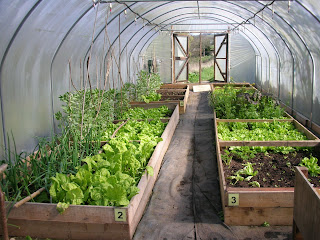But this year, I came back from France with some memories to warm up even the coolest autumn night. The Gorges du Tarn is a stunningly beautiful area with an ecosystem to match.

We had started at Le Rozier where we camped with friends. We had walked up towards the Causses, following "vertiginous" loose gravel paths with precipitous edges. As we neared the summit, a vulture glided at the same height no more than 50 feet away. Then we realised why the route had been named the "echelle", the "ladder"!- after climbing over some large rocks using steel hand-holds we were presented with a long rusty sloping steel ladder to reach the final summit.This was a ladder too far and we returned the way we came! The next day we walked up to the troglodite village of Deglazine, clinging precariously to the rockface. Apparently, in very early times humans could escape bears by climbing up ropes into these caves.
Leaving our friends, and camping, we cycled to Meyrueis where I saw a poster publicising a talk on behalf of the "Gardeners of France" on the subject of cultivating trees. On the impulse I went along. I couldn't follow all the usual banter that accompanies such meetings but one of the local members asked me why I didn't come and live in the village, and later I was given various seeds that were being exchanged. I'll have to wait till next spring to find out what they might be!
The Gorges also have fascinating historical associations. St Enimie, a tiny village on the river Tarn had a thriving economy in the middle ages and villagers created "faisses" or terraces up the vertiginous slopes on which they grew grapevines, almond trees and fruit trees. In 1793 the population was 1130 which represent the earliest records. A community can be traced further back to at least 951 when a Benedictine monastery was built.
The community was viable on account of "trading" or exchanging their produce with other communities on the causses- the flat lands above the gorges, which suited the rearing of cattle and sheep for dairy produce and fleeces. In St Enimie itself one can still see the hollowed stone that was used to measure a set volume of grain for these transactions.
Walking the picturesque cobbled streets of the village one could visualise a thriving place with all manner of craftsmen and peasants displaying and trading their produce.
The viability of the village was eventually undermined by the arrival of the vine virus Phylloxera and mechanisation.
Cycling further round the Gorges we stopped for a coffee in La Malene- another beautiful hamlet set against the stunning backdrop of steep rock faces and the river itself. There, I fell into conversation with the owner, a man in his sixties perhaps, with a deeply furrowed, tanned face. I had commented on his curious modification of the woodstove which had sections of flexible exhaust piping exiting the top surface. He told me it brought in more heat into the room........
Anyway, he told me about life in the village. He could garden, fish and hunt here. Every villager also had the right to trees for firewood- the specific trees were marked beforehand. "I have everything I need here" he said. Then the conversation led to the weather and he commented that there were no longer any seasons. I suggested that climate change may be at work. He immediately responded that "c'est fini, c'est fini!" - its finished, its finished!". I was almost taken aback by his sudden comment. But then I have come across this before- the "simple" country folk with minimal "education" but more insight and understanding of the real world than many a sophisticated modern urban dweller. This man fully understood where we were at. He hadn't, like many in the affluent West, been "educated beyond their intelligence".









